Standards of accessibility
Standards of accessibility
Built Up Environment
An accessible physical environment benefits everyone, not just persons with disabilities. Measures should be undertaken to eliminate obstacles and barriers to indoor and outdoor facilities including schools, medical facilities, and workplaces. These would include not only buildings, but also footpaths, curb cuts, and obstacles that block the flow of pedestrian traffic.
An accessible government building is one, where persons with disabilities have no barrier in entering it and using all the facilities therein. This covers the built environment – services, steps and ramps, corridors, entry gates, emergency exits, parking – as well as indoor and outdoor facilities including lighting, signages, alarm systems and toilets.
Identifying accessible buildings requires annual accessibility audits that determine if a building meets agreed upon standards. Once a building is deemed fully accessible, an annual audit is not necessary, but should be required for any proposed changes to the structure or systems contained therein. A full audit can then be done on a less frequent basis.
Standards of accessibility should be as consistent as possible with international standards, such as those of the ISO, taking into account the local context. In regards to the built environment, ISO 21542:2011, Building Construction – Accessibility and Usability of the Built Environment, delineates a set of requirements and recommendations concerning construction, assembly, components and fittings.
Transport Systems
Persons with disabilities have an equal right to travel and use public and private transportation infrastructure with dignity and independence. Accessible transportation plays a critical role in the growth of its economy. Inaccessible transportation system restricts mobility, denies freedom of movement and active participation, for much of the population who may need accessible transportation.
The revised National Urban Transport Policy (NUTP), 2014 includes universal accessibility in all the planning and implementation interventions. Indian Roads Congress code 103:2012 Guidelines for Pedestrian Facilities provides inclusive roads and street design standards.
Some of the key features related to transport infrastructure accessibility are as follows:
- Well lit streets and bus shelters
- Raised pedestrian crossings to facilitate barrier free movement with differently textured paving material to make the crossing more perceivable
- Footpaths with even surface for movement of mobility aid users and continuous tactile pavers along the entire stretch for persons with visual impairment
- Special white lighting for footpaths that maintains colour contrast from road and ensures that the tactile pavers are visible at night
- Audible light signals that beep when light is green
- Bus shelters with barrier-free access having defined boarding gates with warning tiles
- Folding ramp inside low floor buses allows access to mobility aid users
- Space to park wheelchairs with provision of safety belt to secure during journey inside the buses
- Provision of Braille signage and audible messages on signage panels
- Metro stations and coaches with accessibility features Transportation is a vital component for independent living, and like others in society, PwDs rely on transportation facilities to move from one place to another. The term transportation covers a number of areas including air travel, buses, taxis, and trains.
ICT Ecosystem
Access to information creates opportunities for everyone in society. Access to information refers to all information. People use information in many forms to make decisions about their daily lives. This can range from actions such as being able to read price tags, to physically enter a hall, to participate in an event, to read a pamphlet with healthcare information, to understand a train timetable, or to view webpages. No longer should societal barriers of infrastructure, and inaccessible formats stand in the way of obtaining and utilizing information in daily life.
This target will ensure conversion of public documents published as of a specified year and all current websites meeting the relevant International Organization for Standardization (ISO) criteria, that are found in ISO / IEC 40500 : 2012, Information Technology – W3C Web Content Accessibility Guidelines (WCAG) 2.0.
Public documents refer to all documents issued by the national government as well as all subnational documents. They include all publications such as laws, regulations, reports, forms and informational brochures.
Accessibility for the ICT Products and Services
IS 17802 : Part 1 : 2021 Accessibility for the ICT Products and Services Part 1 Requirements
The standard (Part 1) specifies the needs of people with visual, auditory, speech, physical and neurological disabilities and those with limited cognition, language, and learning applicable to ICT products and services in terms of functional performance statements. It then covers the generic technical requirements for various kinds of ICT to meet functional performance statements.
In line with the RPwD Act 2016, this standard covers a wide range of ICT products and services relating to information and communication, including telecom services, web-based services, electronic and print services, digital and virtual services.
This standard (Part 1) is intended to be used in the context of web based technologies, non-web technologies and those that use both. It covers software, hardware and content as well as services.
The conformance criteria on test descriptions and evaluation methodology are covered in Part 2 of this standard.
Source : - Accessible India Campaign
Do's and Don'ts of Accessible buildings
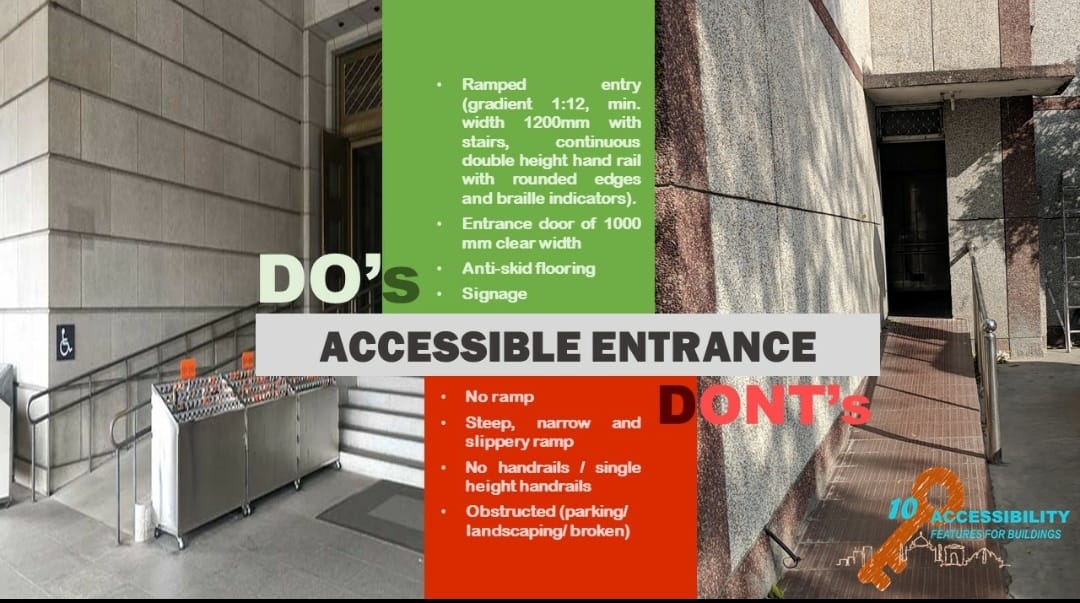
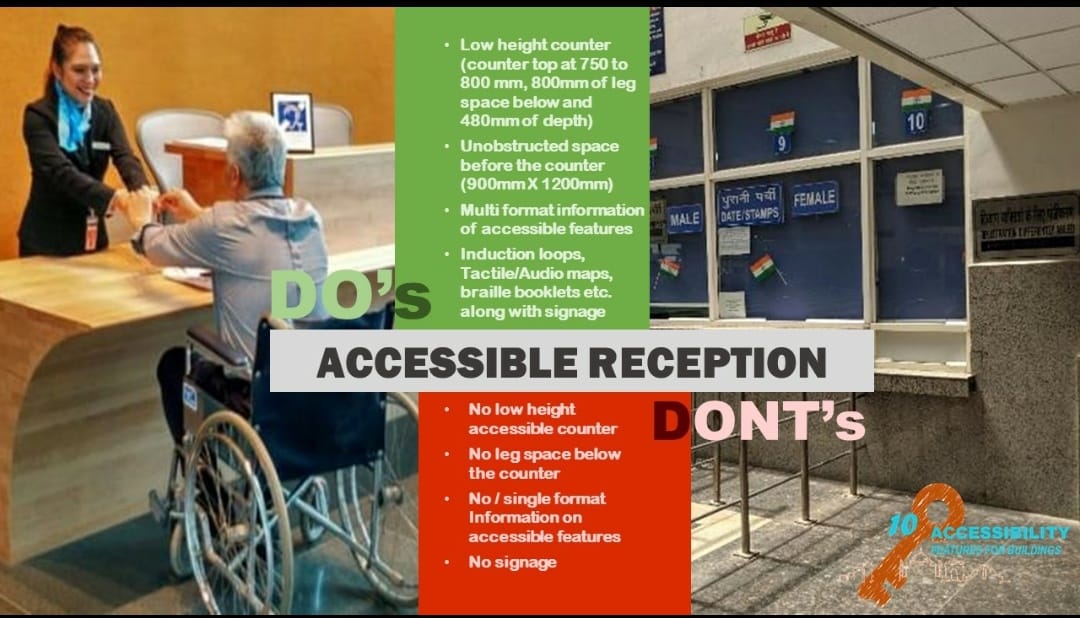
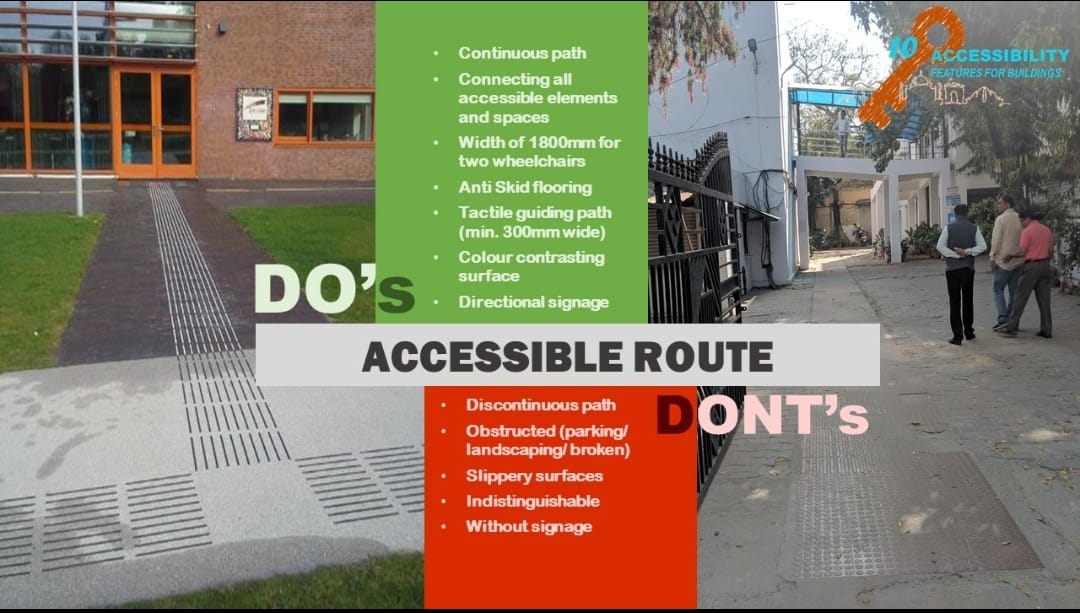
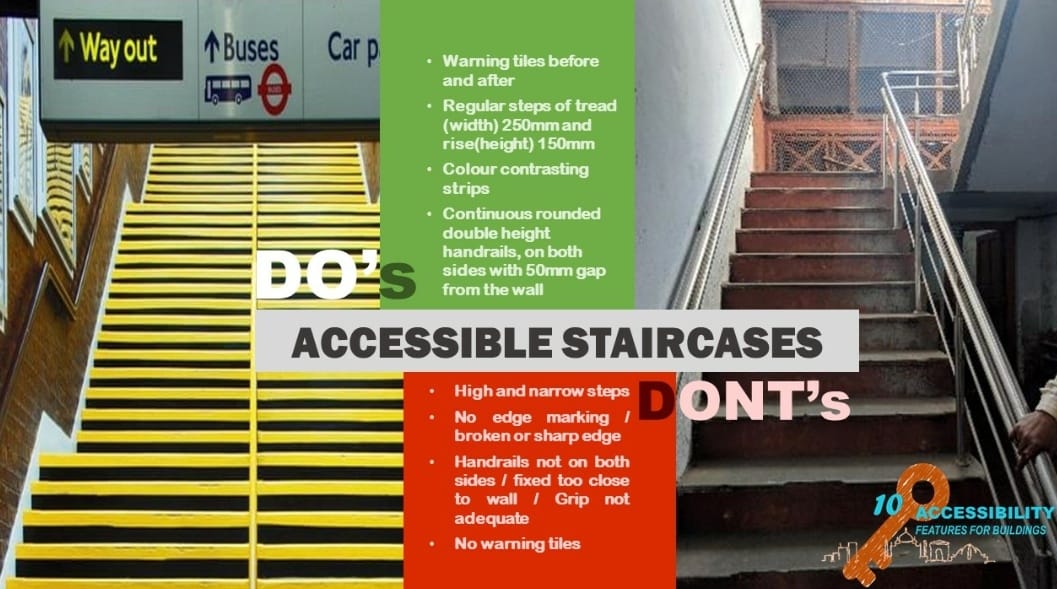
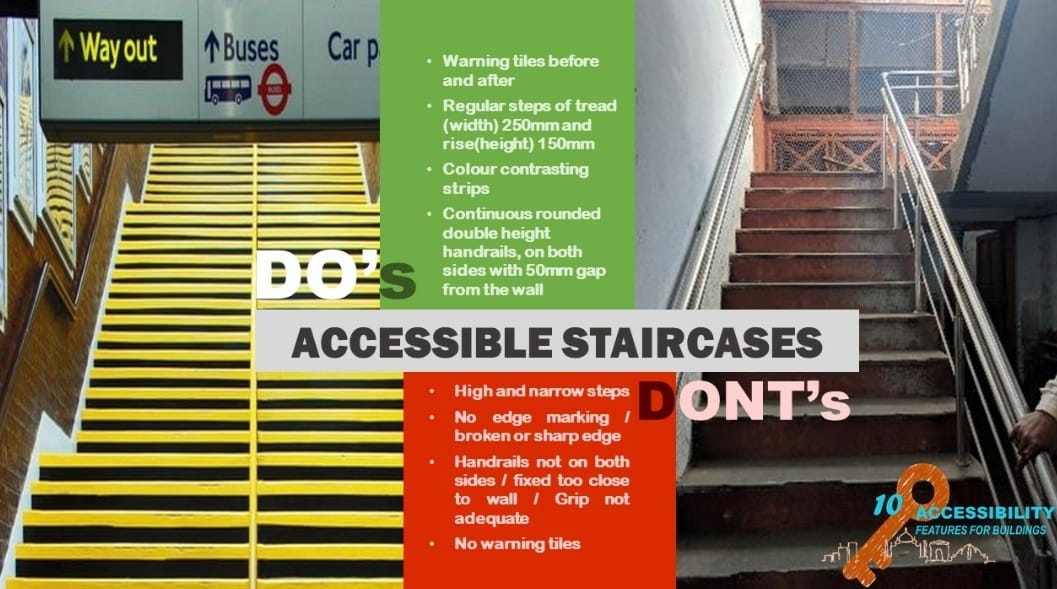
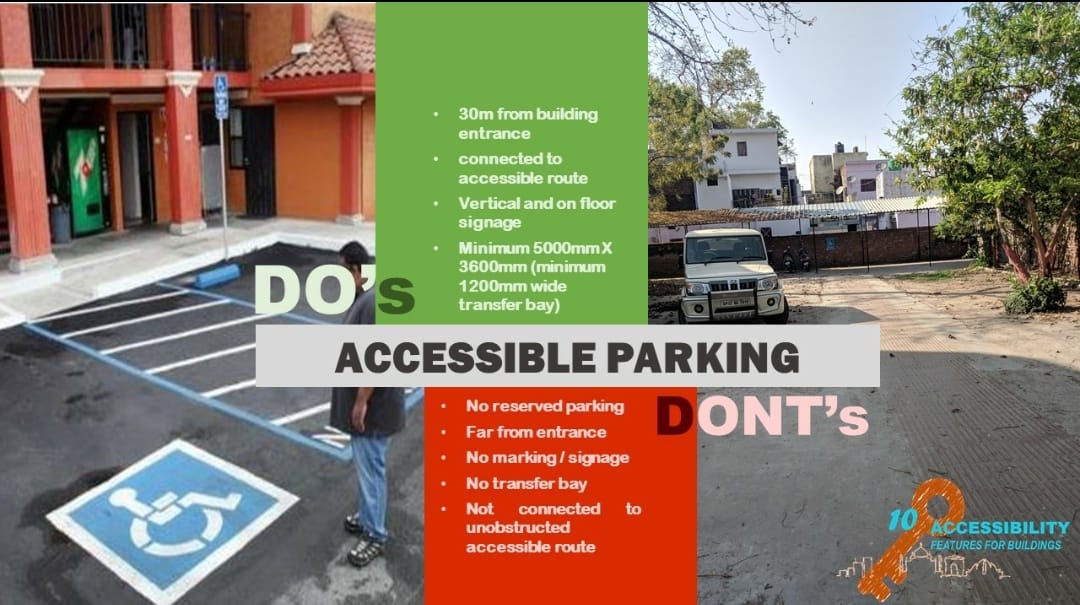
Related resources
Last Modified : 9/15/2022
This topic provides information about Use of Infor...
Provides information about the Sugamya Bharat App
This topic provides information about Global Acces...
This topic provides information about Inclusivenes...
